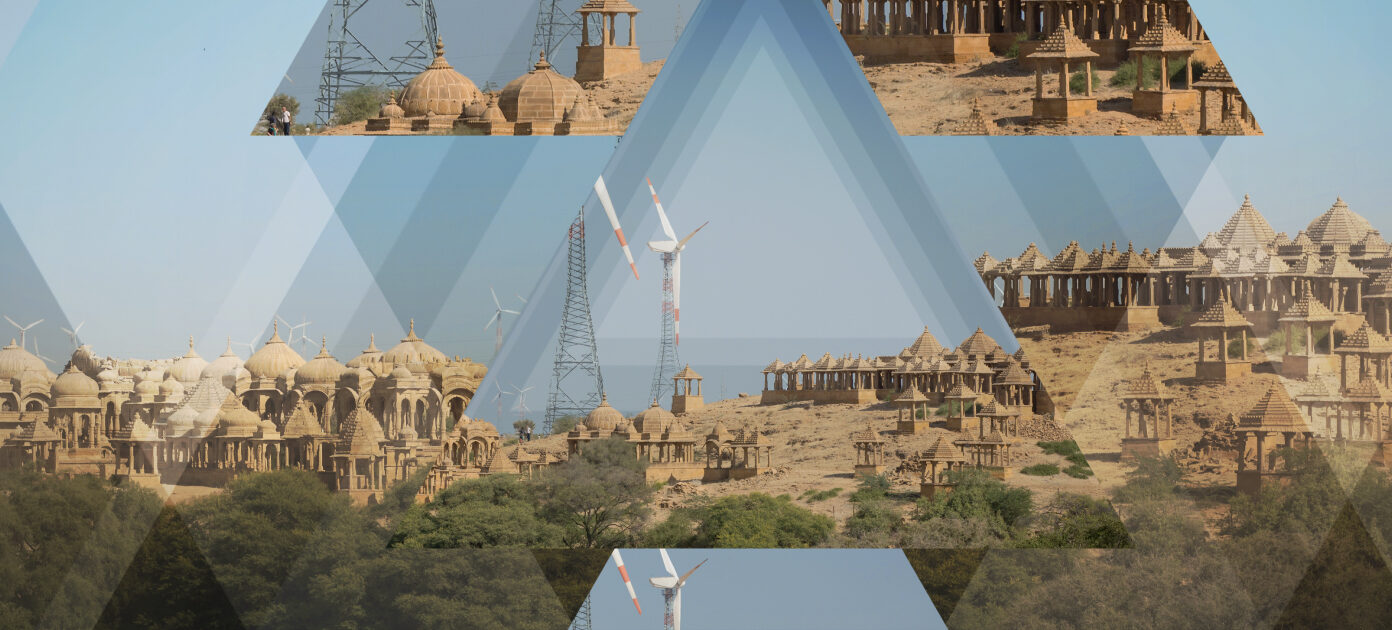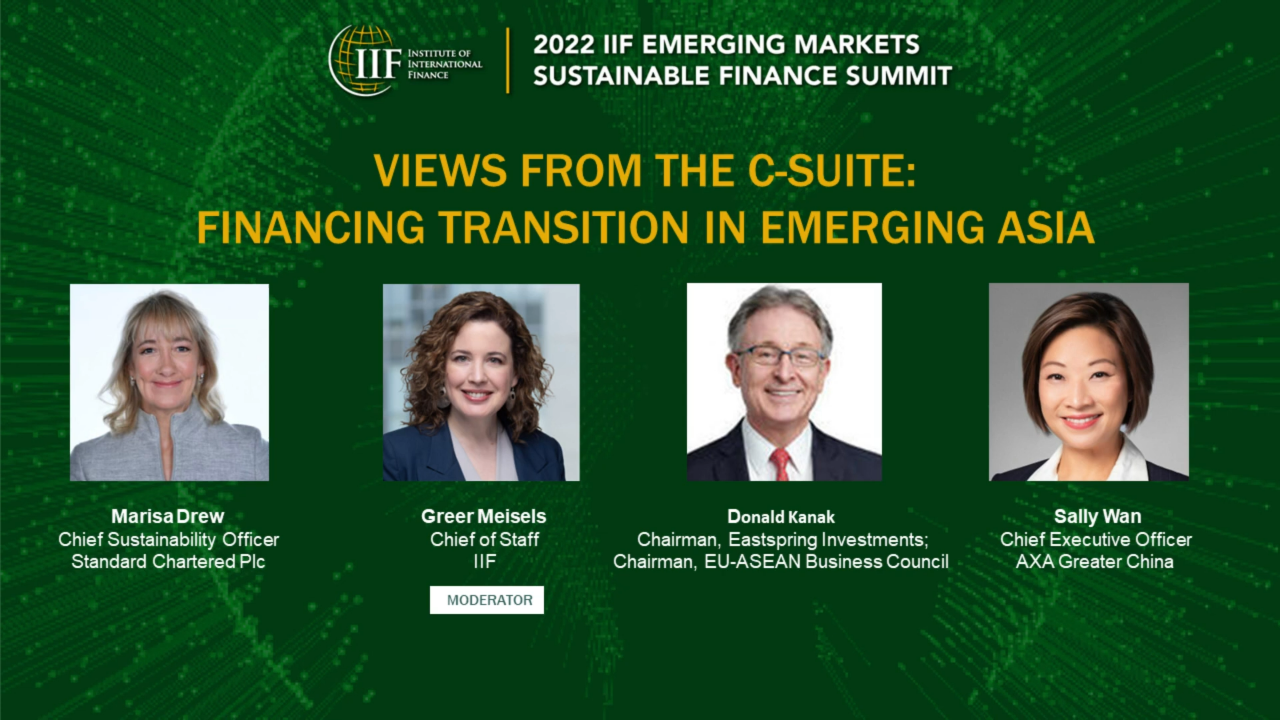Asia’s path to net zero: why we must mobilise capital at scale to support its transition


Asia’s transition to net zero offers a unique opportunity to finance growth, create the jobs of the future and protect against economic degradation.
Innovative thinking, new financing methods and mobilising capital at scale are vital to support the region as it transitions. Real change is possible, and that’s what makes the decarbonisation agenda so exciting.
Achieving this represents both a challenge and an opportunity for the financial sector. We have a unique perspective that can help find fresh ways to support the transition while also shoring up ongoing development and economic expansion.1
But there’s no denying the scale of what’s ahead, with emerging markets among the most vulnerable to the effects of climate change2 and in need of USD95 trillion to reach net zero by 2060, according to our research.
With the right approach, we can achieve a just transition that has myriad benefits for the planet, the environment, communities and the economy.
The role of private investment is crucial in working towards net zero. Our Just in Time research calculated a USD83 trillion opportunity for private investment in emerging markets and identified even more potential to leverage.
To help plug the gap, Standard Chartered has set itself a target to mobilise USD300 billion in green and transition finance by 2030. We’re using our balance sheet to work on behalf of our clients and their decarbonisation goals, underwriting green bonds and creating sustainability-linked loans and bonds.
Here are three ways our sector can help underpin and fast-track the transition:
Bringing together the public and private sectors is one of the main ways we will reach our targets and it’s vital we overcome any silos. Many partnerships are already in operation where the West can deploy funding needs to the developing world, like the Just Energy Transition Partnerships3 or the involvement of the US Agency for International Development in Indonesia.4 But we need to go further and faster, because when all parties work together to get behind project finance for a wind farm or accelerate the transition to electric vehicles, that is when we make the biggest strides forward. The financial sector can help generate packages of finance and spread risk to make investments in Asia’s emerging economies more attractive to small- or medium-sized pension funds around the world. Working together, by using credit wrappers for example, is also a way to take risk off the table. Helping to crowd-in investors and encouraging greater investment is our central role, but multilateral development banks also have a part to play – by using their balance sheets to leverage more and by taking on more risk. The Asia Development Bank’s Energy Transition Mechanism is a great example of what is possible, offering the potential to create the biggest carbon reduction model in the world.5 But wider collaboration is needed, with regulators and supervisors getting involved to promote better disclosure and climate risk management.
Blended finance is one of the most effective ways we can help channel capital to where it is needed most, and Standard Chartered has executed USD10 billion of deals in the past four years. We also participate in the Global Investors for Sustainable Development Alliance, working on concrete solutions to scale-up long-term finance and investment. Technologies that can help monitor and mitigate the impact of climate change need sponsorship, encouragement and funding. And it’s here that the private financial sector can step in, both to offer funding via blended finance and to ensure that the most suitable – and sustainable – technologies are selected. Our recent roll-out of our first environmental, social and governance (ESG) structured note6 in Taiwan is one of the latest examples of our sustainable finance approach. The USD40 million Formosa note, with E.SUN Bank as co-manager, has a 10-year tenor. We’ve also closed an ESG Islamic repo transaction with a Malaysian bank, part of our commitment to finding innovative ways of mobilising capital in this space.
While we must concentrate on reducing emissions and cutting carbon at every opportunity, we also need to acknowledge that there is a hard-to-abate tail and investing in purchasing offsets is a mechanism to circumvent this.Quality and integrity in carbon offsets are key here, because markets won’t scale if they don’t have confidence. Our Climate Impact X joint venture with DBS, SGX and Temasek, aims to boost liquidity, improve transparency and set good prices, while also channelling capital to the projects that need it most.We believe these three approaches will further the contribution of the financial sector and support the transition of emerging Asia towards net zero.
It’s important to recognise that Asian countries with developing markets are not all the same when it comes to climate risks and opportunities. Fast-growing economies may be higher carbon emitters and benefit from energy transition funding, while frontier markets that produce very few carbon emissions may face significant climate risk, yet have less access to international capital flows.
We have to ensure a just transition so that these markets have the same opportunities to access capital for resilience and adaptation.
Emerging Asia’s climate challenge affects us all. As the impact of global warming becomes more evident, there will be spillovers to other regions as well.
Asia is one of the most dynamic growth engines of the global economy. And, while the role that climate change will play in its development is evolving on a daily basis, it’s clear that urgent action is needed.
As an industry, we have a unique perspective to offer and a rare chance to channel capital to aid development, build resilience and make progress over the long term.
The opportunity is here, now we have to grab it with both hands.
1 https://www.bis.org/review/r211109b.htm
2 https://www.imf.org/en/Publications/fandd/issues/2018/09/southeast-asia-climate-change-and-greenhouse-gas-emissions-prakash#:~:text=Average%20temperatures%20in%20Southeast%20Asia,by%20Germanwatch
%2C%20an%20environmental%20group.
3 https://ukcop26.org/six-month-update-on-progress-in-advancing-the-just-energy-transition-partnership-jetp/
4 https://www.usaid.gov/indonesia
5 https://www.adb.org/what-we-do/energy-transition-mechanism-etm#:~:text=%22The%20ETM%20is%20an%20ambitious,and%20respond%20to%20growing%20demand.%22
6 https://www.theasset.com/article-esg/47579/standard-chartered-launches-first-esg-formosa-note

With topics around urban transformation, energy transition, the future of transport and critical infrastructure across Asia, Africa and the Middle East, this content series will unearth fresh trends and showcase how we are supporting clients in the transition towards a more sustainable and inclusive future.